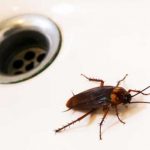
If you’re a home or business owner in the Chicagoland area and it feels like you’re seeing more rodents than usual, it’s not just your imagination. The Windy City was recently voted as the Rattiest City in the U.S. for the third straight year, beating out the likes of New York, LA, and DC. What is it about Chicago and the upper Midwest that has rats flocking here in record numbers?
One of the main factors is the recent spike in temperature. Winters are getting warmer in the upper Midwest; last year was the first in recorded history with no snow on the ground in Chicago in January and February. The National Pest Management Association (NPMA) is forecasting that consecutive mild winters will result in a boom for rodent populations, which means rodent control will only become more important as weather patterns continue to change.
What effect does the weather have on rodent populations? And why should those in urban Illinois worry about this new trend? Terminix Anderson, your local Illinois pest company, has the answers and what you can do about it.
Rats in Chicago by the Numbers
How exactly does a city get ranked as the “Rattiest” in the nation for three years in a row? With some truly eye-popping statistics: As of October of 2017, the city of Chicago responded to over 39,000 official rodent complaints. Just last summer, rodent complaints to the city rose over 40 percent in a three-year span for those same months.
To their credit, the city is taking this matter seriously; the mayor’s office created the Bureau of Rodent Control in 2017, and has now hired 30 rat control crews for 2018 at a cost of $1 million dollars. That may seem like a lot, but not compared to the estimated $19 billion in economic damages caused by rats in 2000.
Why is the Rat Population in Illinois Exploding?
There are several reasons why rats are becoming a big issue, but it mainly boils down to biology. Rats are extremely adaptable creatures that are so used to living with humans it’s honestly more surprising to see a wild rat in an Illinois field than one scampering down a damp inner-city alley.
Like humans, rats need food, water, and shelter to survive. By burrowing underneath buildings or taking up residence in walls, attics, and basements, they can remain safe from predators while keeping close to a constant food source – your garbage. Leaving trash in unsealed plastic receptacles is the same as laying out a buffet to the common rat; in addition to eating pet food and rotten leftovers, they’ve been known to eat their own feces and cannibalize their dead if necessary.
Once rats find an ideal environment, they will breed like crazy. Though the average lifespan for a rat is approximately one year, female rats are able to produce as many as six litters of 10-12 pups in that time. Each of those rats will reach sexual maturity in just over a month, allowing them to repeat the process over and over to inflate the rat colony’s numbers to ridiculous proportions. Given enough space and food, two rats can quickly become 2,000 rats in a little over a year.
Why You Should Be Wary of a Rat Infestation
Rats may look furry and cute, but the potential health risks they pose are no joke. Rat populations are breeding grounds for disease, some of which can be transferred to humans through their feces and urine. Pregnant women and young children have an increased risk of adverse health effects, ranging from severe illness or developmental defects in newborns to asthma attacks and allergic reactions in children who come into contact with rat droppings.
Rats can also inflict critical damage on structures as well. They can burrow into foundations, making them dangerously unstable, and can chew through electrical or fiber-optic wiring, as well as other building materials like wood, plastic, and aluminum siding. In fact, it’s been claimed that almost 25 percent of “unexplained wildfires” start from rodents chewing on something.
How You Can Help Control the Rat Population in Illinois
If rats are these unstoppable breeding machines that can eat garbage and destroy homes, how can we hope to avoid the coming Ratpocalypse? For starters, we have to be smart. There are two very simple ways to eliminate a rat population: cut off their food supply, and introduce a natural predator.
When it comes to getting rid of rat food, there are some easy steps you can take. For starters, swap out those old plastic garbage containers for sturdy metal ones, and don’t leave pet food out in a dish where it can easily be accessed. Indoors, get in the habit of cleaning up food crumbs and scraps immediately so they don’t act as bait. Rats prefer to nest close to a food source, so if there’s no food for them to eat, they’ll think twice before moving in.
On the predator front, you can always consider adopting a rescue cat or kitten from a local animal shelter to patrol your home or business. Even if they’re not the aggressive type, just the smell of their scent is often enough to keep rats away. In the Chicago area, the Tree House Humane Society have seen great results from a program where they release neutered feral cats into rat-infested neighborhoods to kill and/or scare off rodents for good.
However, if you’re allergic to cats (or just not a pet person in general), you can always call on a rat’s other main predator: Terminix Anderson.
Let Terminix Anderson Help You Get Rid of Rats
Living with a rat infestation is dangerous and unsanitary. In order to keep your family, employees, or customers safe, you need an effective rodent management plan that can get rid of these disease-carrying pests for good. Our expert technicians are trained in the latest rodent control techniques, and will work closely with you to keep your home or business rodent-free all year long. If you suspect you have a rodent infestation, contact us today for a free inspection.





